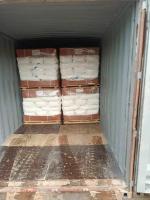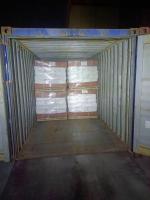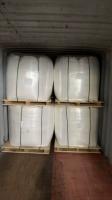Our Products
Polyacrylamide / the largest manufacturer of chemical mud used for drilling
963_small.jpg)
Chemical mud plays a central role in modern drilling engineering, supporting safe, efficient, and environmentally compliant drilling operations. Unlike traditional bentonite-only mud, chemical mud contains specially formulated additives such as polymers, inhibitors, lubricants, dispersants, fluid loss reducers, bridging agents, and pH conditioners. These chemicals enhance the physical and chemical properties of drilling fluid, enabling it to perform multiple critical functions across complex geological formations. Chemical mud is used extensively in oil and gas well drilling, geothermal drilling, CBM wells, horizontal wells, and water well construction.
Chemical mud is designed to achieve high performance with low solids content, reduce formation damage, and improve operational stability. Below are its major applications and functions in drilling engineering.
1. Wellbore Stability Improvement
One of the most important applications of chemical mud is maintaining borehole stability in shale, clay, and reactive formations. Water-based drilling fluids can easily hydrate clay, causing swelling, sloughing, and wellbore collapse. Chemical mud contains powerful stabilizers such as:
-
KCl or other salts
-
Polymer inhibitors (polyacrylamide, PHPA)
-
Glycols and amines
-
Silicate systems
These chemicals prevent water invasion into clay layers, limit hydration, and stabilize the borehole wall. Polymer-based chemical mud provides a protective encapsulating film on shale surfaces, reducing the risk of stuck pipe, tight hole, torque increase, and wellbore enlargement. This is especially valuable in long horizontal sections and high-angle wells where stability is critical.
2. Effective Cuttings Transport and Hole Cleaning
Chemical mud is engineered to optimize rheology and maintain proper viscosity, gel strength, and flow characteristics. Additives such as viscosifiers (PAC, CMC, xanthan gum, anionic polyacrylamide) enhance the carrying capacity of the fluid. The result is:
-
efficient removal of drilled cuttings
-
prevention of cuttings beds in horizontal wells
-
reduced risk of pack-off
-
cleaner bit and faster drilling rates
Enhanced hole cleaning is crucial when drilling long-reach or extended-lateral wells where poor solids transport can cause severe operational issues.
3. Fluid Loss Control and Filtrate Reduction
Chemical mud uses advanced fluid loss agents such as:
-
PAC-L & PAC-R
-
Starch polymers
-
Anionic polyacrylamide (APAM)
-
Synthetic copolymers
These materials form a thin, low-permeability filter cake on the borehole wall, minimizing filtrate loss into permeable formations. A well-controlled fluid loss system:
-
reduces differential sticking
-
prevents washouts
-
protects the reservoir from water invasion
-
minimizes formation damage
-
improves borehole integrity
In sandstone or fractured formations, chemical mud dramatically reduces fluid infiltration, preserving natural formation porosity and permeability.
4. Lubrication and Torque Reduction
Chemical mud systems often include lubricants such as:
-
glycol-based lubricants
-
ester lubricants
-
polymer beads
-
asphaltic additives
-
friction reducers
These components reduce the coefficient of friction between the drill string and wellbore. Enhanced lubrication helps:
-
lower torque and drag
-
reduce the risk of stuck pipe
-
improve sliding performance in directional drilling
-
extend drill bit and motor life
In high-angle and horizontal wells, lubrication is essential for smooth drilling operations and maintaining toolface orientation.
5. Solids Control and Flocculation Applications
Chemical mud uses specialized polymers such as anionic polyacrylamide to flocculate ultra-fine solids, ensuring effective solids removal. When solids are not properly controlled, mud becomes heavier and more viscous, increasing pumping costs and reducing drilling efficiency. Chemical mud enables:
-
improved separation efficiency in shale shakers and centrifuges
-
agglomeration of ultra-fine cuttings
-
cleaner, more stable drilling fluids
-
prolonged mud system life
Better solids control leads to fewer dilution requirements and significant cost savings.
6. Reduction of Formation Damage
A major advantage of chemical mud is its ability to protect the productive reservoir. Traditional high-solids drilling fluids can plug pore throats, causing permanent impairment. Chemical mud minimizes damage through:
-
low solids content
-
thin filter cake
-
reduced water invasion
-
protective polymer coatings
-
controlled pH and ionic activity
Reservoir-friendly chemical mud ensures better well productivity and reduces the need for extensive cleanup or stimulation afterward.
7. Environmental and Operational Benefits
Modern chemical mud is designed to be more environmentally compatible than older systems. It:
-
reduces waste volumes due to low-solids design
-
minimizes need for chemical dilution
-
allows faster settling of solids in pits
-
improves recycle and reuse efficiency
-
reduces toxicity compared with oil-based mud
These benefits help drilling projects meet strict environmental regulations while lowering operational costs.
8. Enhanced Drilling Performance and ROP Improvement
Chemical mud improves drilling efficiency through:
-
smoother drilling due to optimized rheology
-
improved bit hydraulics
-
cleaner bit face, reducing bit balling
-
lower friction and better motor performance
-
reduced nonproductive time caused by stuck pipe
-
improved hole cleaning leads to higher ROP
These combined advantages contribute to shorter drilling time and better cost control.
9. Compatibility Across Diverse Geological Formations
Chemical mud performs well in different environments, including:
-
water-sensitive clay and shale
-
reactive formations
-
unconsolidated sands
-
carbonate zones
-
HPHT wells
-
geothermal wells
-
coal seams
-
fractured reservoirs
Its adaptability makes chemical mud one of the most widely used fluid systems in modern drilling operations.
Conclusion
Chemical mud plays an indispensable role in drilling by providing wellbore stability, fluid loss control, solids management, lubrication, formation protection, and enhanced drilling efficiency. Its combination of polymer additives, inhibitors, viscosifiers, and lubricants ensures superior performance in complex drilling environments while reducing operational risk and environmental impact. Chemical mud remains a critical technology for safe, cost-effective, and high-performance drilling across the global energy industry.





